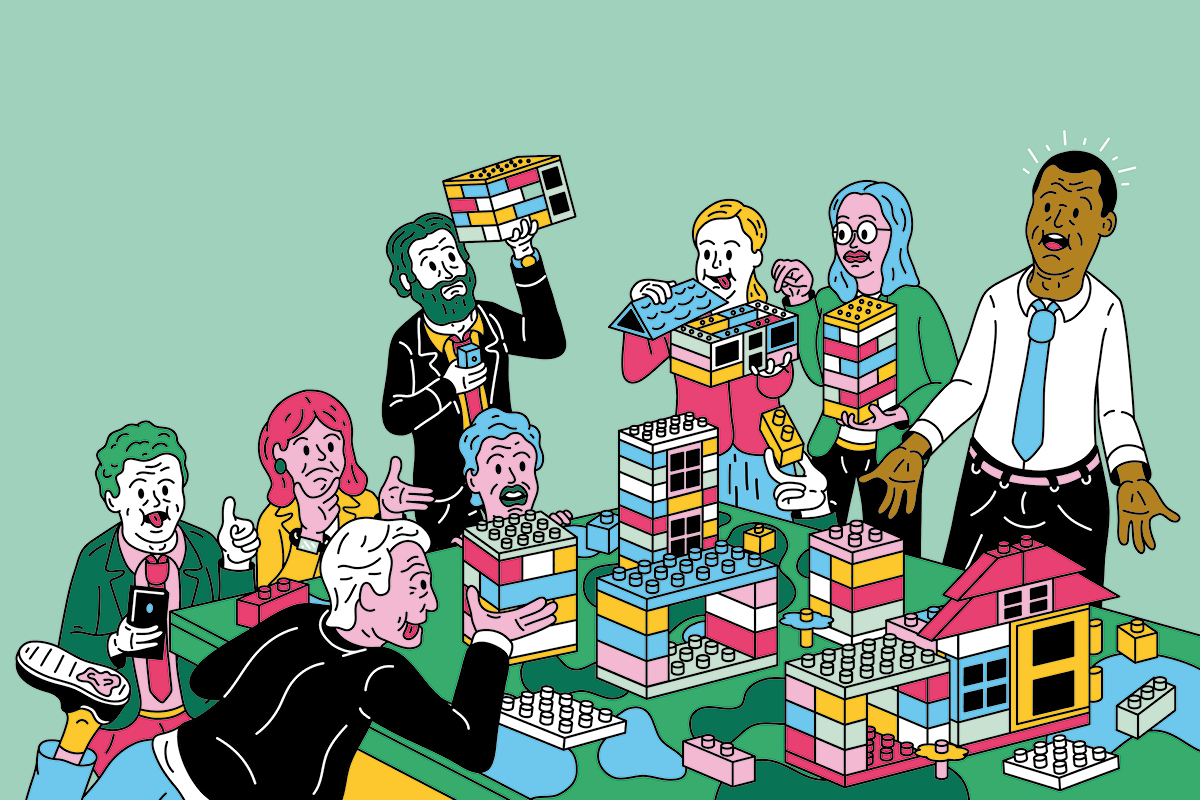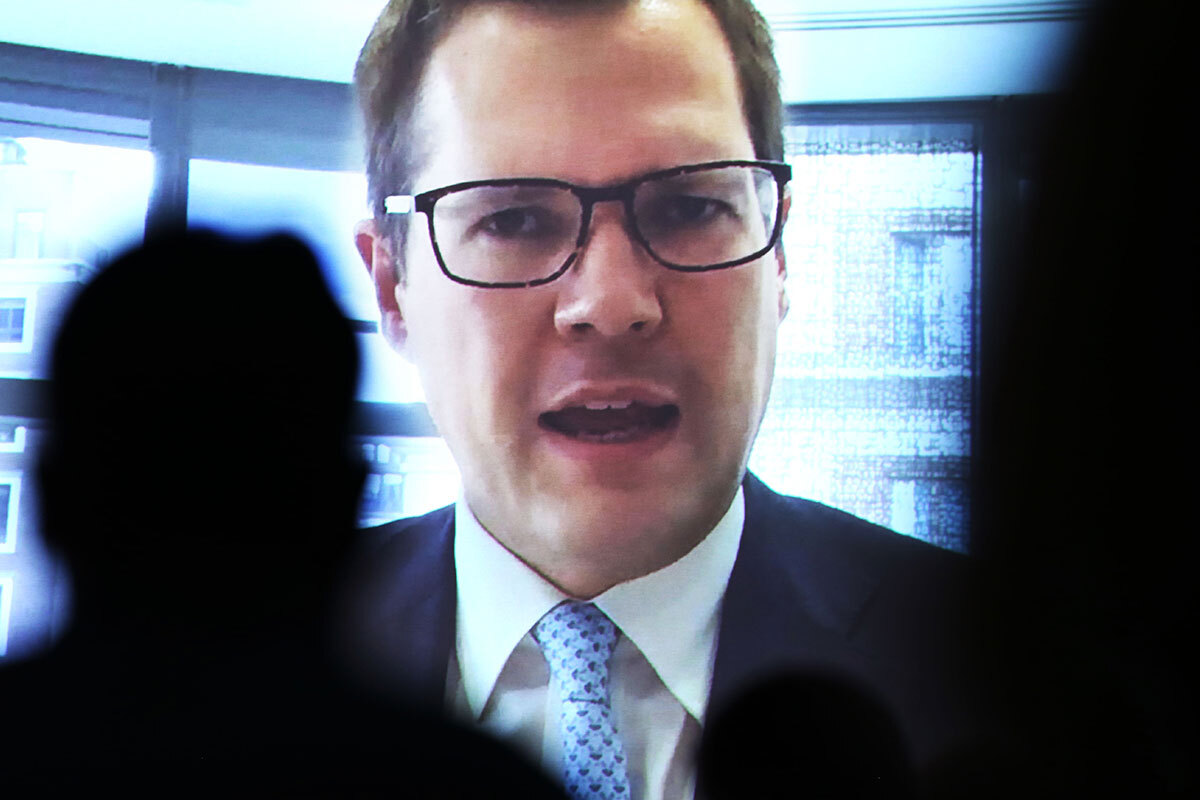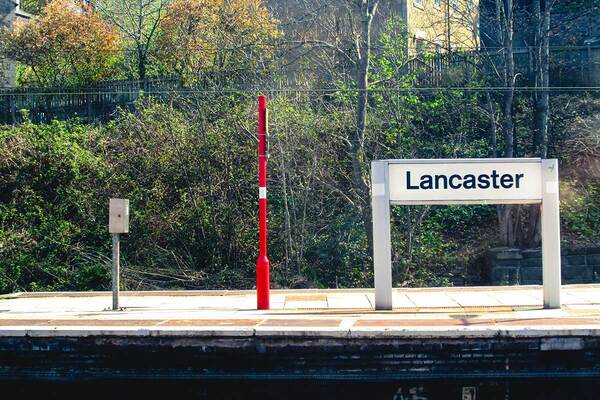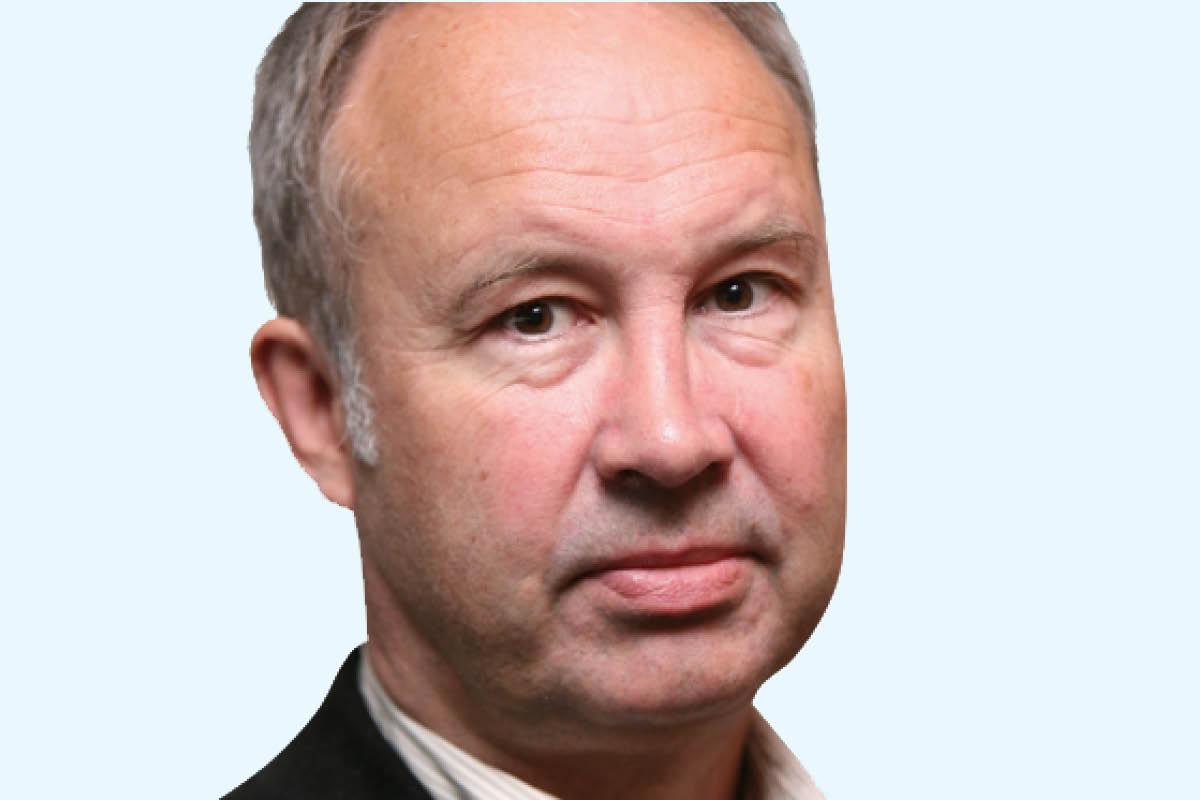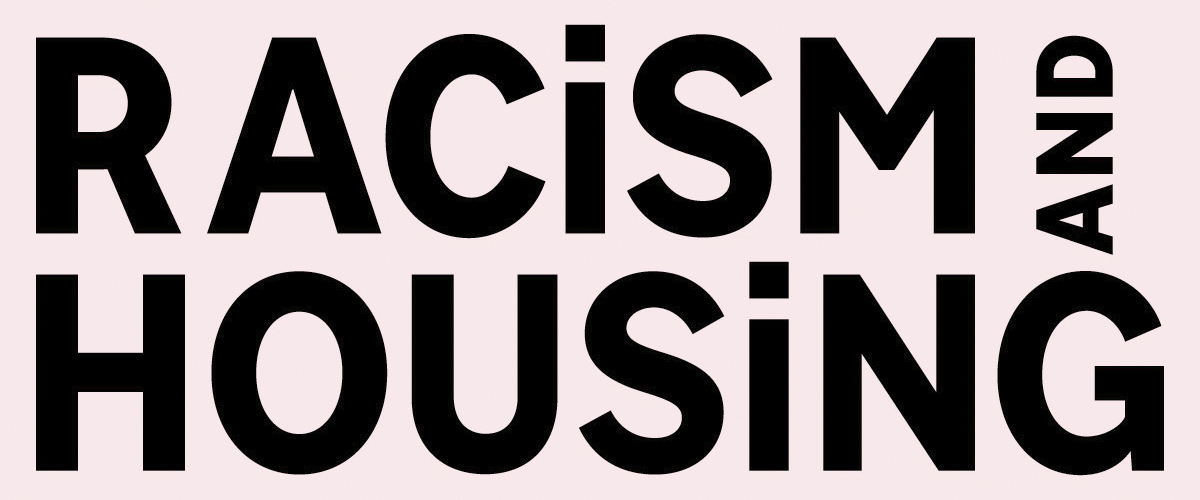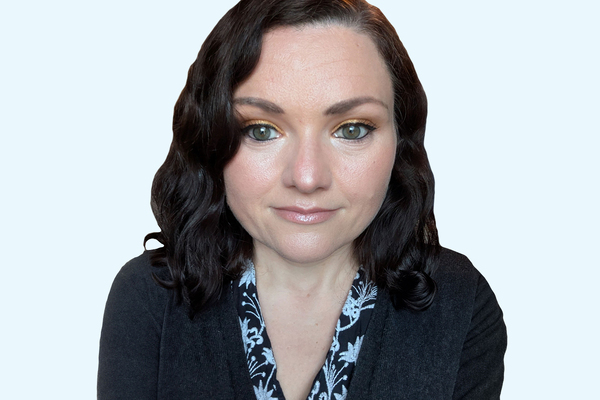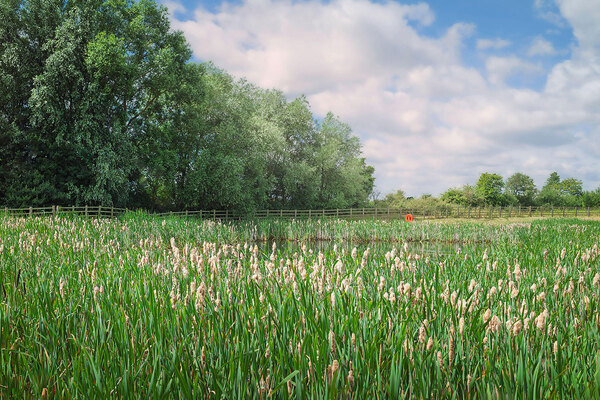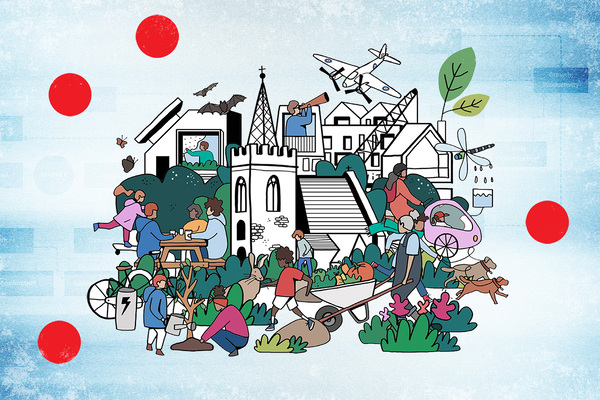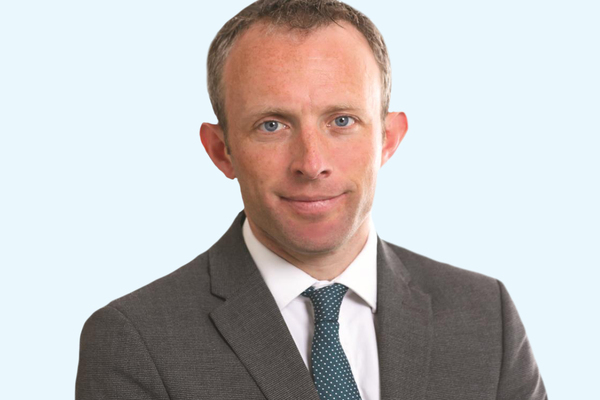You are viewing 1 of your 1 free articles
How planning is failing to address race inequality in housing

We are planning our towns, cities and homes without addressing race inequality, a new report reveals. Jess McCabe reports. Illustration by James Clapham
If you’ve been reading Inside Housing recently, you have probably picked up there is a problem with race inequality in housing in the UK. Black people are more than three times as likely as white people in England to experience homelessness. Shelter research earlier this year concluded that one million Black adults (57%) in Britain and 1.8 million Asian adults (48%) do not have a safe or secure home, compared with 33% of white adults.
The next logical step is to consider what can be done about this? Our readers may specifically be interested in the subset of that question: what can social landlords do about it?
One answer that has not had enough attention, according to a new report, lies in the planning departments of local authorities.
A new report by Amy Bristow, a researcher at Heriot-Watt University’s I-SPHERE housing research programme, sets out how planning has, in fact, been contributing to the problem instead.
Inside Housing exclusively brings you the key findings from that report.
“The decisions that planners make about heights, location and design can become divorced from a broader social function”
The report has the lengthy title, Meeting the housing needs of BAME households in England: the Planning System. To put it together, Ms Bristow interviewed planners in different parts of England, as well as analysts, consultants, people working in housing and the community. She also looked at numerous existing studies.
Social housing – and, in planning terms, how much housing of any type is built and where it is meant to be located – is a key element of all of this. “There was definitely a feeling among the participants in the research that social housebuilding is a really important aspect of this,” says Ms Bristow.
The report also delves into how planners operate. “[Planners] would almost all say that planning has a social purpose, to improve people’s lives,” Ms Bristow adds. “[But] on a day-to-day basis, the decisions that planners make about heights, location and design can become divorced from a broader social function. That is where the disconnect lies in tackling these issues.”
Lessons from history
As far back as 1983, the Royal Town Planning Institute published a report called Planning for a Multi-Racial Britain, and in 1985, the Greater London Council published “race and planning guidelines”, although these early efforts were quickly ridiculed as another “loony left” idea.
In 1993, Waltham Forest Council started to monitor the ethnicity of people applying for planning permission. It started to try and calculate the housing needs of ethnic minorities in the borough, and work out how to meet those needs through the planning system – two things which the I-SPHERE report points out are not widely done even today.
In 2004, the Labour government commissioned a study on how diversity could be “mainstreamed” into planning policy.
But the only policy changes to actually be implemented were in relation to Gypsy and Traveller communities – for example, the Housing Act 2004 required councils to undertake accommodation assessments and then incorporate them into housing and homelessness strategies. In 2013, then-communities secretary Eric Pickles revoked the government’s Equality and Diversity in Planning guidance, saying “the public want to see fair play, with planning rules enforced consistently, rather than special treatment being given to certain groups”. But, the I-SPHERE report notes: “In 2015, Mr Pickles was ruled to have unlawfully discriminated against a racial group by systematically ‘calling in’ planning appeals from Romany Gypsy communities on green belt land for his own decision.”
The Equality Act 2010 introduced the public sector equality duty, which many public bodies met by carrying out equality impact assessments. But, the I-SPHERE report reveals, these are not all they are cracked up to be.
One of the councillors interviewed anonymously by Ms Bristow, and quoted in the report, said: “[This was] something that I brought up when I was first a councillor and they were explaining that they have to do these assessments because they can’t discriminate unless they’ve considered it. So I was like… you can discriminate as long as you do it consciously?”
Flaws in current policy
“There is a view within the planning profession that formal equality of treatment is sufficient in pursuit of social justice, meaning that planners and housing specialists can be reluctant to take steps to address the specific needs of BAME groups in policy and practice,” the report concludes.
One particular problem that Ms Bristow points out is in local plans and housing strategies.
When councils draw up these documents, which go on to shape what homes are built and where, they must consider the housing needs of a list of groups.
This includes those who require affordable housing, families with children, students, disabled people, and even people who want to build their own homes. But the only ethnic community that is recognised is Travellers.
“If the needs of BAME groups are missing in the Strategic Housing Market Assessment, it is therefore more likely that they will also be missing in policy and strategy,” the report concludes. While some local authorities do assess the needs of ethnic minority communities, elsewhere in the report Ms Bristow notes that planning departments and councils are so stretched on resources, it is often the case they will not do anything unless they are legally required to.
Meanwhile in London, the most ethnically diverse part of the UK, the most recent Strategic Housing Market Assessment from 2017 does not include the needs of ethnic minority communities or faith communities. As Ms Bristow’s report notes, as a consequence, “the London Plan also does not include associated policies for these groups”.
The 2020 white paper, Planning for the Future, only has a short paragraph on equality and diversity. Interviewees raised this issue with Ms Bristow. They “felt that these issues can’t be considered to be on the agenda, or even within the remit of planning, if they are not included in plans for national planning reform”.
In numbers
1m
Black adults in UK who do not have safe or secure home
1.8m
Asian adults in UK who do not have safe or secure home
Flaws in practice
It is not only policy that is a problem, though. Ms Bristow’s report says that most of the people she interviewed “made some mention of how local planning authorities may be reproducing or even exacerbating inequalities, rather than addressing them, and felt that not enough is done to question these effects”. “The issues in planning are regardless of a political spectrum,” Ms Bristow points out.
One of the main examples in the report is the process of public consultation. This is a mainstay of planning, both in terms of seeking responses to specific planning permission applications, and also in forming planning policy. Even though this is meant to make the planning process more democratic, some people Ms Bristow interviewed pointed out that those with a lot of time and resources are more likely to engage, and given the economic inequalities in England today, that is much more likely to be affluent people and white people.
“[T]he people who are able to apply that pressure and influence on decision-making are actually a fairly narrow element of society,” one planner told her.
Another interviewee noted that the fact that ethnic minority people are disproportionately more likely to live in private rented accommodation also has an impact. “That transience [of rental households] means rationally you have less incentive to engage with things such as planning consultations. Speaking anecdotally, if ever I was renting, I would immediately bin any kind of planning consultation document that came in, just like, ‘there’s no guarantee I’ll be here in two months’.”
“[T]he people who are able to apply that pressure and influence on decision-making are actually a fairly narrow element of society”
The report notes that some councils found engagement in planning went up during the pandemic, and involved a more diverse segment of society – because meetings and consultations were held online.
One of the key players in planning is the nimby. As one participant in Ms Bristow’s research says: “There’s been that assumption that because you don’t get [much] nimbyism occurring in the areas where minority communities are focused, that minority communities aren’t interested in planning. Well, my experience has been exactly the opposite…
“[I]f you talk to people in those communities, they’re very interested in planning because they experienced it in ways that a lot of the nimby communities don’t… and yet somehow [nimby] communities are the ones who are driving the agenda.”
The report also notes that there is a serious lack of ethnic diversity among planning professionals, and even in departments where there is more representation of Black, Asian and ethnic minority planners, they are “rarely” in leadership positions.
Potential for change
Despite all these problems, the report highlights how the planning sector has huge untapped potential to shape communities and developments for the better. There are limitations to this – planners have more influence and power in areas where there is a lot of development, because their ability to negotiate with developers is higher.
“Planners should be encouraged to think more deeply about who will be impacted by a planning application, whether it’s small or large, and whose interests may be being met or excluded by certain decisions,” Ms Bristow says. “At present, it’s really easy to become bogged down in technical details and perhaps to forget about the people involved.”
Key recommendations
The report has recommendations for central government, local authorities and the planning profession, including:
- Central government should compel local authorities to take account of issues of racial equality in all planning decision-making and therefore prevent these considerations from being simply a tick-box exercise.
- Expand the National Planning Policy Framework’s presumption in favour of sustainable development to include an aim of striving for racial equality in all planning processes, so that this overarching aim can feed into all aspects of the planning system.
- Attach a clearer statutory duty to equality impact assessments that obligates councils to act on findings of adverse impacts on groups with protected characteristics.
- Local authorities should actively undertake outreach work in order to ensure that the views of BAME communities are included in public consultation opportunities, and promote the inclusion of more marginalised members of BAME communities, such as children and young people, women and low-income or homeless households.
- Work in partnership with any specialist BAME housing providers operating locally, and also any housing providers known to house large numbers of BAME or low-income residents, to foster mutual learning and to share data and information on the needs of BAME groups.
- Include references to any cultural needs of local BAME groups in any local design guidance drawn up.
Racism and Housing series
Inside Housing’s Racism and Housing series aims to investigate how race inequality and racism interact with and impact on housing – for tenants, for staff working in housing, and for organisations. It has been launched a year since George Floyd’s murder prompted a huge global wave of Black Lives Matter activism.
We will be publishing monthly investigations that look at racism, race and housing, both in terms of what is going wrong, and what actions that sector is taking to address this.
If you have an idea for a story relating to this campaign, please contact deputy editor (features) Jess McCabe, at jess.mccabe@insidehousing.co.uk.
The stories published so far include:
‘We had to abandon everything’: the story of Chan Kataria and the flight of the Ugandan Asians
Race and the cost of living crisis: the impact on social housing tenants
How to create an inclusive housing association: a conversation with Bal Kang
How Cardiff landlords are tackling under-representation
Why has diversity progress stalled?
How racism impacts homeless people
How planning is failing to address race inequality in housing
Race and allocation: who are the new tenants getting social housing, and is it equitable?
How to increase representation of ethnic minorities in senior roles
How race impacts on people’s likelihood of living in a damp home or experiencing fuel poverty
Related stories
